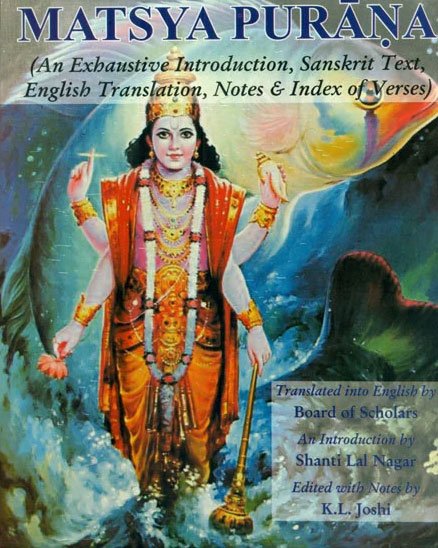The Matsya Purana (critical study)
by Kushal Kalita | 2018 | 74,766 words | ISBN-13: 9788171103058
This page relates ‘Akshayatritiya-vrata’ of the English study on the Matsya-purana: a Sanskrit text preserving ancient Indian traditions and legends written in over 14,000 metrical verses. In this study, the background and content of the Matsyapurana is outlined against the cultural history of ancient India in terms of religion, politics, geography and architectural aspects. It shows how the encyclopedic character causes the text to deal with almost all the aspects of human civilization.
Part 4.2a - Akṣayatṛtīyā-vrata
The Akṣayatṛtīyā is regarded as one of the holiest tithis of a year. It is the third day of bright fortnight (śuklapakṣa) of the month of Vaiśākha (April-May). If this tṛtīyā falls in Kṛttikā nakṣatra then it is regarded as more sacred.[1] One who observes a vrata in this auspicious day begets inexhaustible fruit of all his good deeds. The progeny of the devotee will be unlimited and the good deeds of the person will never come to an end. This vrata is known as Akṣayatṛtiyāvrata. It is described in the Matsyapurāṇa that one who observes a fast in the third day of bright fortnight of Vaiśākha attains imperishable fruits of his all good deeds.[2]
In the 65th Chapter of the Matsyapurāṇa, the greatness of Akṣayatṛtiyāvrata is found described by lord Śiva to Nārada in response to a query of the great sage. The Purāṇa mentions that one who is willing to observe this vrata should take bath in water mixed with akṣata (unhusked rice) and offer akṣata to Lord Viṣṇu. Akṣata or well made barley meal (saktu) should be offered to the brāhmaṇas as well as should be taken by the devotee himself. By performing this vrata the devotee gets never ending benefit.[3] If this vrata is observed according to rules even for once, the devotee begets the benefit of all the tṛtiyās. One who keeps a complete fast on this tṛtiyā and worships Janārdana gets the benefit of having performed a Rājasūya sacrifice and attains bliss.[4] The Viṣṇusmṛti said that one should fast on this tithi and worship Vāsudeva with whole grains of rice and should offer them into fire and donate to the brāhmaṇa. Thus the devotee becomes purified from all sins; whatever is donated or sacrificed or muttered on this tithi brings inexhaustible results.[5]
Kane remarks,
“The Bhaviṣyottarapurāṇa deals at some length with it. It says that this tithi is one of the yugādi tithis because the kṛta age began on it. Whatever is done on it, such as bath, gifts, muttering of sacred texts (japa), offerings into fire, Veda study, satiating deceased (with water) -all that becomes inexhaustible. It provides that gifts of jars of water and of umbrellas and of footwear should be made (to brāhmaṇas) on this day and that what is sacrificed or donated on this day never comes to an end and therefore this tithi is called akṣaya (inexhaustible) by the sages.”[6]
Describing the majesty of Pṛthūdaka tīrtha, the Vāmaṇapurāṇa speaks about akṣayatṛtiyā. It is said in that Purāṇa that the day on which the Moon, the Sun and the Jupiter unitedly come under Mārgaśirā nakṣatra, is called Akṣayatṛtiyā and on this sacred day the devotee should visit the Pṛthūdaka tīrtha.[7]
In the modern age also Akśayatṛtiyāvrata carries great value. People worship Vāsudeva on this day. Śrī Bānkebihārī temple of Vrindavan remains open for visiting the main idol of lord Vāsudeva only in this auspicious day. Many businessmen start their businesses on this day. Gifts of pitchers filled with water, together with sweets and seasonal fruits are given in this vrata for the benefit of departed ancestors.[8]
Footnotes and references:
[1]:
[2]:
Ibid., 65.2
[3]:
Ibid., 65.3-4
[4]:
tṛtiyāyāṃ samabhyarcya sopavāso janārdanam/ rājasūyaphalaṃ prāpyagatimagryāñca vindati// Ibid., 65.7
[5]:
vaisākhaśuklatṛtiyāmupoṣitoˊkṣataiḥ śrīvāsudevamabhyarcya/ tāveva hutvā datvā ca sarvapāpebhyaḥ puto bhavati// yacca tasminnahani prayaccha tadakṣayyamāpnoti// Viṣṇusṃṛti, II.90.17-18
[7]:
Vāmaṇapurāṇa, 50.3-6
